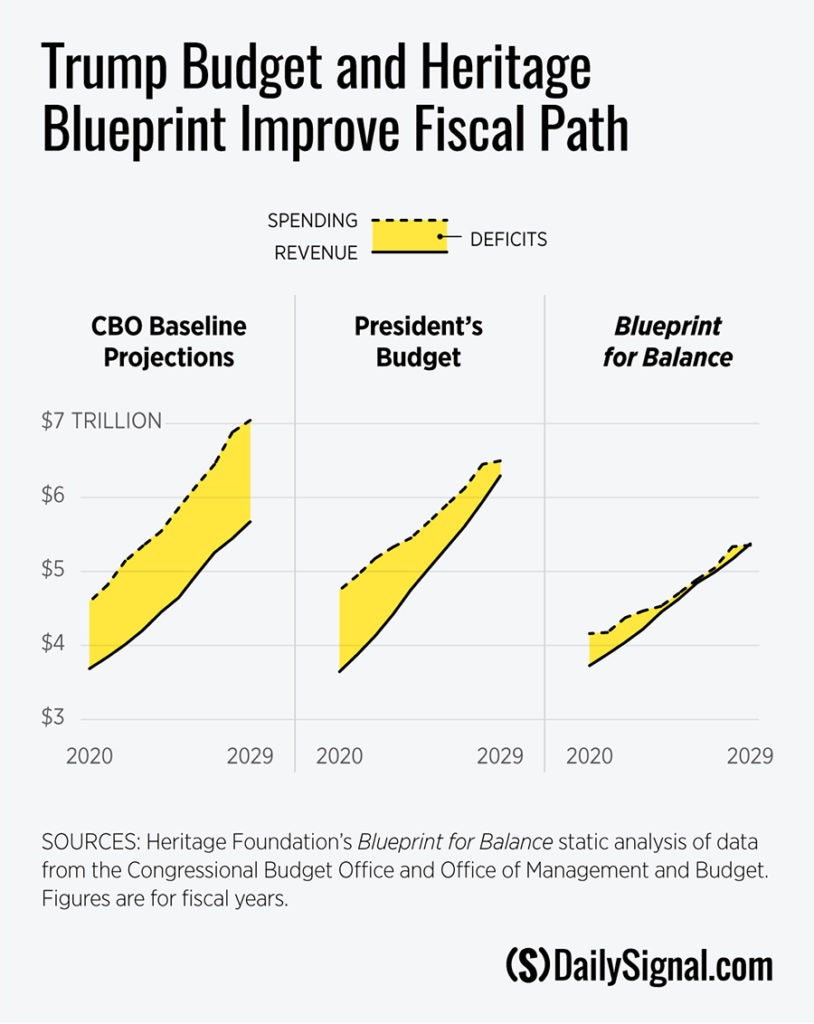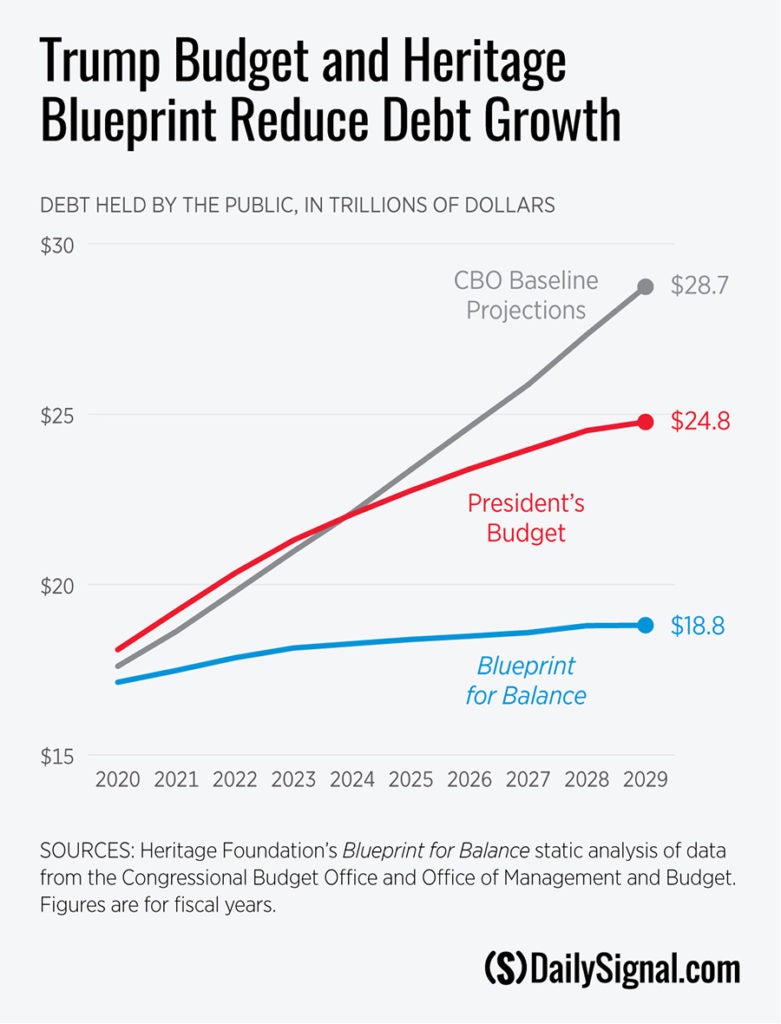“Can Congress Avoid a Debt Default and $125 Billion in Spending Cuts?”
That’s the scary headline of a New York Times article by Emily Cochrane this week. The headline refers to the looming debt limit deadline, when the Treasury will run out of authority to continue borrowing, absent a change to the law.
The timing of that deadline will likely coincide with the end of the fiscal year and the return of spending caps required by the Budget Control Act—unless lawmakers cut another caps deal.
As lawmakers grapple with this year’s fiscal deadlines, they should consult two documents in particular: the Heritage Foundation’s Blueprint for Balance and the president’s proposed budget. Both blueprints provide insights on how much less Congress should spend and where to find efficiencies and cut waste.
It’s critical that Congress reject any caps deal that increases the deficit. And before raising the debt limit, Congress should adopt fiscal restraints and spending reforms that offset any increase in the debt limit they might consider.
Chapter six of the Heritage Blueprint is chock-full of savings proposals. These ideas are based on criteria such as whether the private sector or a lower government entity would be best suited to an activity, whether there is wasteful spending to cut, and whether a program is so fundamentally unfair (by picking winners and losers in the marketplace, for example) that it should be eliminated.
Of the 175 Blueprint proposals, 66 are fully included in the president’s budget, and another 41 are partially included. This means the Heritage Blueprint and the president’s budget share about 61 percent in common, according to these criteria.
In those instances where the president’s budget partially reflects a Heritage Blueprint proposal, it’s usually because of a difference in how much each proposal suggests to cut. There is agreement about the problems with a program but differences in approach to tackling them.
In the Heritage Blueprint, curious readers will find each proposal accompanied with a presidential budget tracker that explains the differences and similarities in approach. Critics of both budgets often focus on the effects that spending cuts would have on those who receive benefits from certain programs. Yet such a focus ignores two important factors.
First, for a federal program to provide benefits to one person or group of people, it must first withdraw money from the productive economy in the form of taxing the public or issuing debt.
In some cases, federal spending is justified. For example, national defense provides vital security to the entire country and is a core constitutional function of the national government.
But in other cases, the costs of government spending far outweigh the benefits. Part of the reason why budgeting is so important is that it forces us to examine the costs of spending—much of which takes place today on autopilot, with little or no oversight from Congress.
Second, the explosion of spending in recent decades has led to huge deficits, a gargantuan national debt, and catastrophic long-term debt projections.
Currently, annual deficits are projected to increase primarily due to the growing, and unfunded obligations of Social Security and Medicare, the country’s largest domestic spending programs. Record deficits loom for as far as the eye can see unless Congress reforms entitlement programs very soon.

Both the president’s budget and the Blueprint would reduce the deficit over time without hiking taxes. In turn, this would have a vitally important impact on the national debt.

While the total debt would increase under both plans, the size of the debt relative to the economy would shrink. Whether debt grows relative to the size of the economy is one key indicator whether the debt is sustainable or not.
Along those lines, economic growth is another shared focus of both plans. Both the Blueprint and the president’s budget envision permanent tax cuts for individual Americans by extending much of the 2017 Tax Cuts and Jobs Act. The Blueprint would also keep taxes low on new business investments by extending expensing, which would help maintain the robust economy Americans are currently enjoying.
Both budgets also would further the work of tax reform by addressing subsidies in the tax code.
While the president’s budget would make significant progress in streamlining the federal government and lowering deficits, there are some areas where next year’s presidential budget can improve.
It could, for instance, reform Social Security and Medicare, end college tuition handouts that drive up costs, limit loans for college students, reduce corporate welfare in the agricultural sector, and fully eliminate (rather than shrink or maintain) a multitude of programs that are outside the proper scope of the federal government.
But Congress doesn’t have to wait for the next president’s budget to take action. Instead, they should follow their legal requirement of pursuing a budget resolution, and then pursue spending and policy reforms as part of this year’s appropriations process.
In particular, Congress should avoid any caps deal that adds to the deficit. The Blueprint and the president’s budget highlight plenty of areas to offset a defense increase with cuts to non-essential and inappropriate federal spending.
Lawmakers should address the debt limit on its own. They should adopt robust fiscal restraints and spending reforms, commensurate with the debt limit increase being considered, before increasing the debt limit again.
Congress has all the tools at its disposal to responsibly address this year’s fiscal deadlines and move the budget toward a path to balance. The Blueprint and the president’s budget provide the American people with important information to hold lawmakers accountable as the process unfolds.
This piece originally appeared in The Daily Signal




